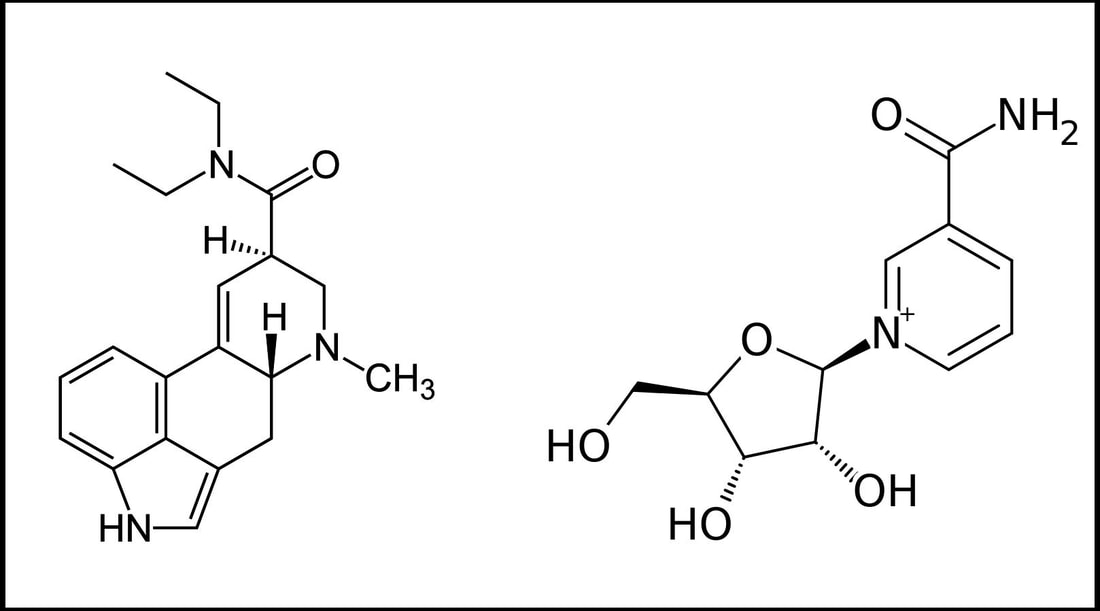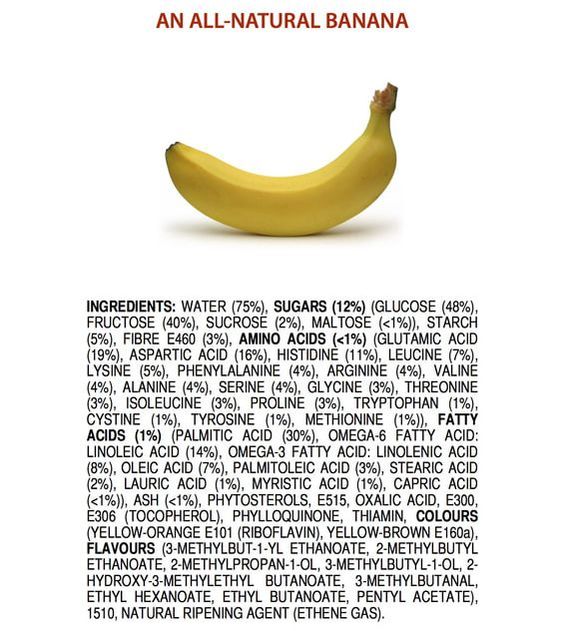[Andy writes... ] Do you want safe food? Do you eat chemicals? How do you decide what’s natural, and is “natural” a good indicator of safety? What’s a chemical anyway? Is a banana still natural if it contains 2-hydroxy-3-methylethyl?
Since you’re probably an eater, I’m going to ask you about pairs of things and you tell me which one you’d rather eat:
Would you rather eat French fries or a raw potato?
Would you rather eat atropine or thyamine?
Would you rather eat nicotinamide riboside or lysergic acid diethylamide?
Would you rather eat apple seeds or glyphosate?
Good game, fun times. As you might imagine, some of those pairings were made with the assumption you wouldn’t recognize either name. Others were paired to raise questions about chemicals, nature, and safety. Here’s a quick rundown of the choices:
Round 1: When we fry a potato some of the starches form a chemical called acrylamide, which you can find in French fries. This causes cancer in mice and rats when given at high doses, but the effect on humans is less clear (seems relatively safe, see reference 2). Raw potatoes don’t taste good. Personally, I’d choose French fries.
Round 2: Atropine is a naturally occurring chemical in some plants of the nightshade family. It has been used in medicine, but 3 mg might kill a mouse and 50 mg might kill a rat (3). Thyamine is the chemical name of vitamin B1. I’d chose thyamine.
Round 3: Nicotinamide riboside is the name of vitamin B3. Lysergic acid diethylamide is the hallucinogen LSD, which is considered relatively safe but can cause some strange psychoactive effects. I’m sure we’d all choose vitamin B3.
Round 4: Apple seeds contain cyanide. Rough estimates predict ~200 apple seeds contain enough cyanide to make a lethal dose for a 154-lb person (4). About 1 mg of cyanide could kill a rat, and about 0.03 mg could kill a mouse (5). Glyphosate is the chemical name of the popular weed killer Round-Up, which has spawned extensive research and discussion about its effects on agriculture, crop biotechnology, and food. It takes upwards of 1,100 mg to kill a rat (6,7). For reference, the standard rate of glyphosate application is ~8 mg per square foot in a field (8). I would eat at least 1000 times more glyphosate than cyanide.
There’s plenty wrong with the world today. There are many crises and many things we need to work on, including within our food system. Let’s have some perspective though-- the food system isn’t perfect, but it’s pretty darn good. I suggest that when you are confronted with the next great food issue, try and skip the fear caused by unknown chemical names and invest a little time in learning about whatever compound someone is trying to scare you with. Maybe there’s no reason to be afraid at all.
For more reading I recommend the recent Forbes article “If You Can't Pronounce It, Don't Eat It' And Other Food Mantras That Don't Hold Water” by Kavin Senapathy.
Finally, check out this sweet image from James Kennedy’s blog, Ingredients of an All-Natural Banana:
- Romeo and Juliet, Act 2, Scene 2. William Shakespeare.
- Acrylamide and Cancer Risk, American Cancer Society.
https://www.cancer.org/cancer/cancer-causes/acrylamide.html - Atropine. U.S. National Library of Medicine.
https://toxnet.nlm.nih.gov/cgi-bin/sis/search/a?dbs+hsdb:@term+@DOCNO+2199 - Are Apple Seeds Poisonous?
http://www.healthline.com/health/food-nutrition/are-apple-seeds-poisonous#overview1 - Cyanide. U.S. National Library of Medicine.
https://toxnet.nlm.nih.gov/cgi-bin/sis/search/a?dbs+hsdb:@term+@DOCNO+1245 - Pesticide Information Profile, Glyphosate. Cornell University.
http://pmep.cce.cornell.edu/profiles/extoxnet/dienochlor-glyphosate/glyphosate-ext.html - Glyphosate Technical Fact Sheet. National Pesticide Information Center.
http://npic.orst.edu/factsheets/archive/glyphotech.html - Glyphosate Use for Optimum Field Performance. DuPont Pioneer.
https://www.pioneer.com/home/site/us/agronomy/glyphosate-optimum-performance/



